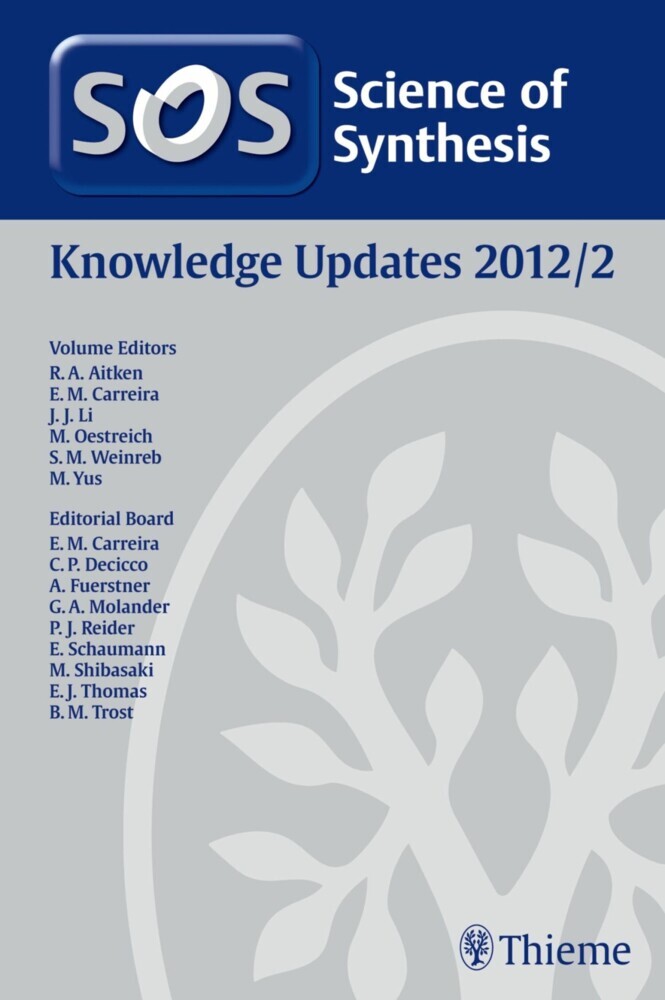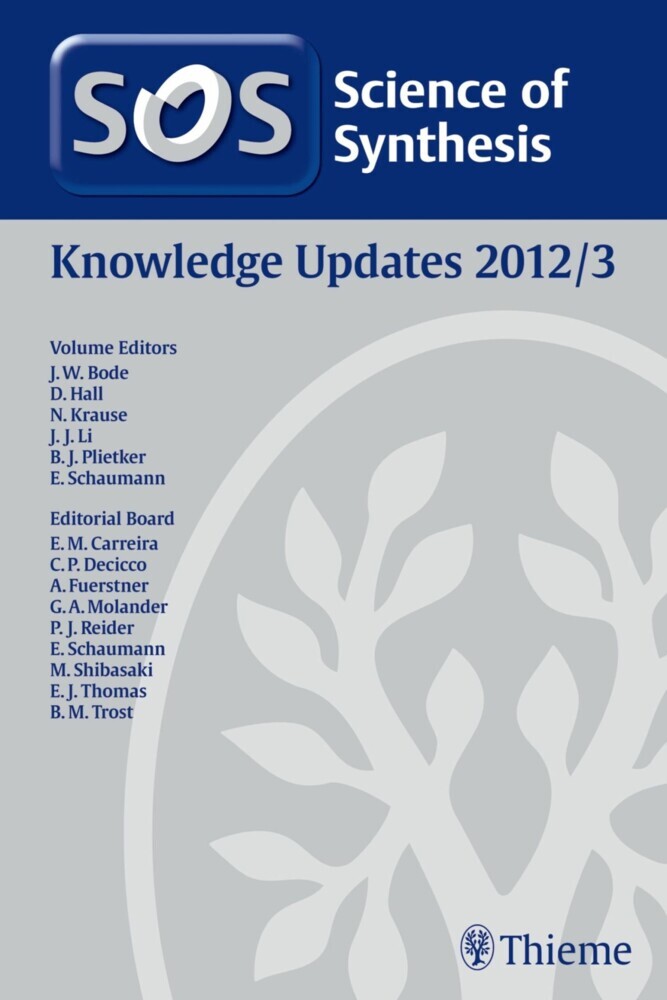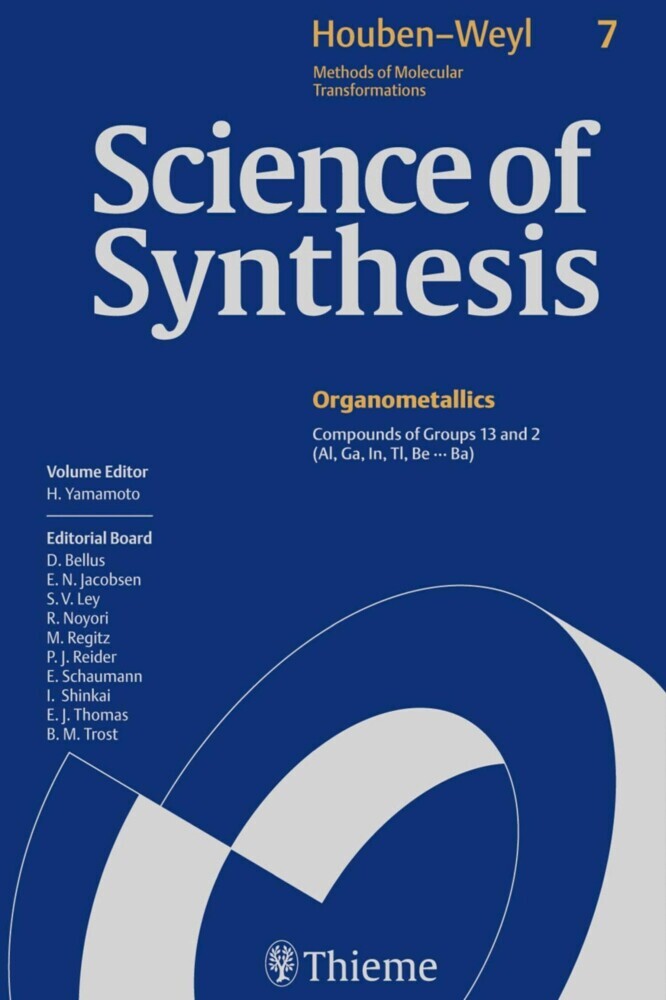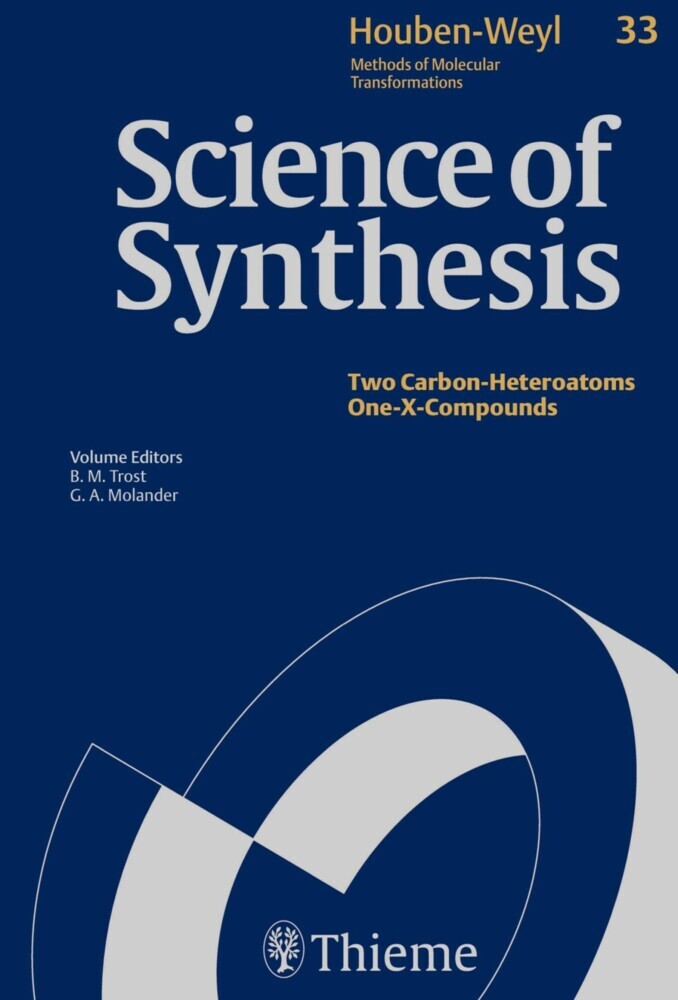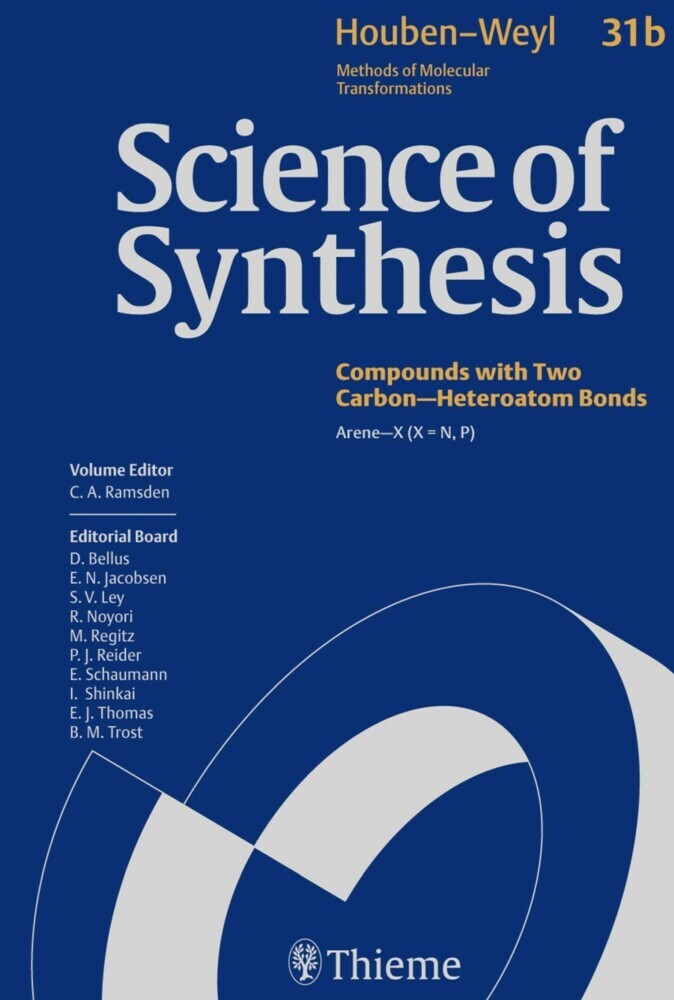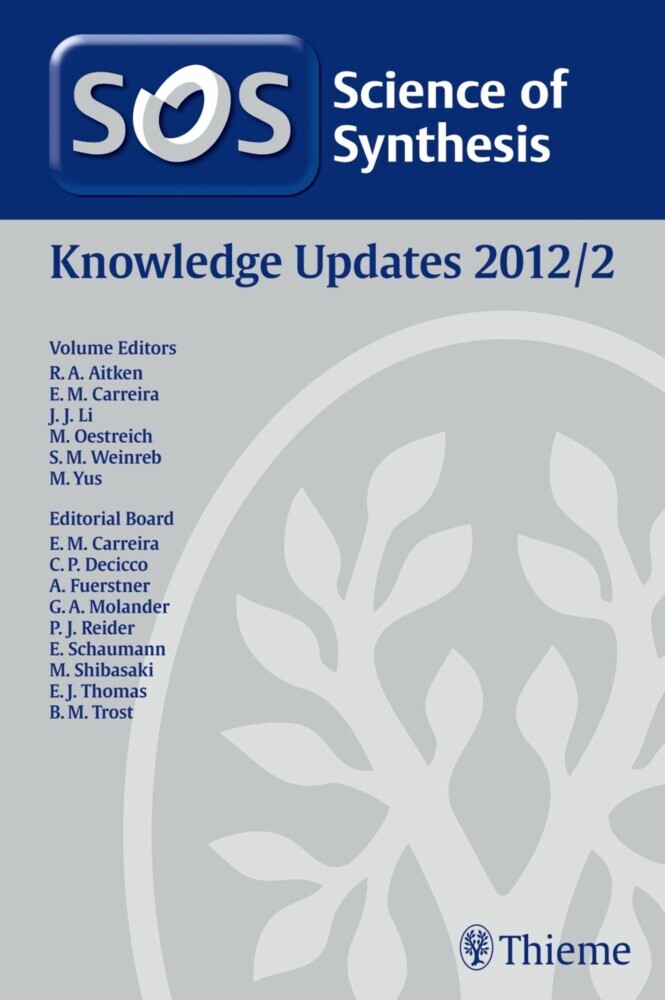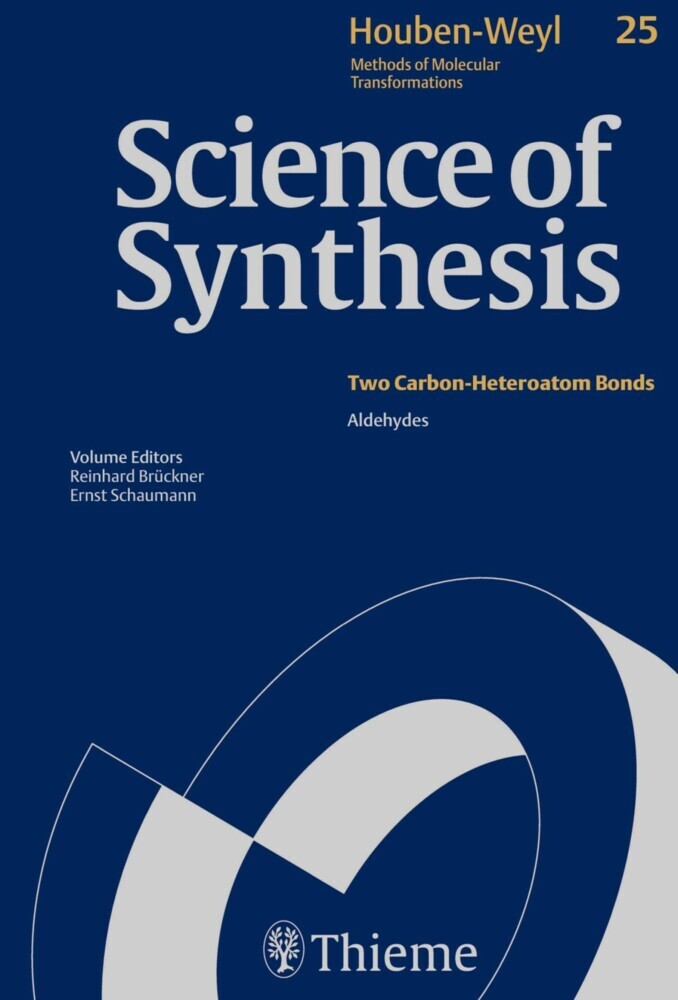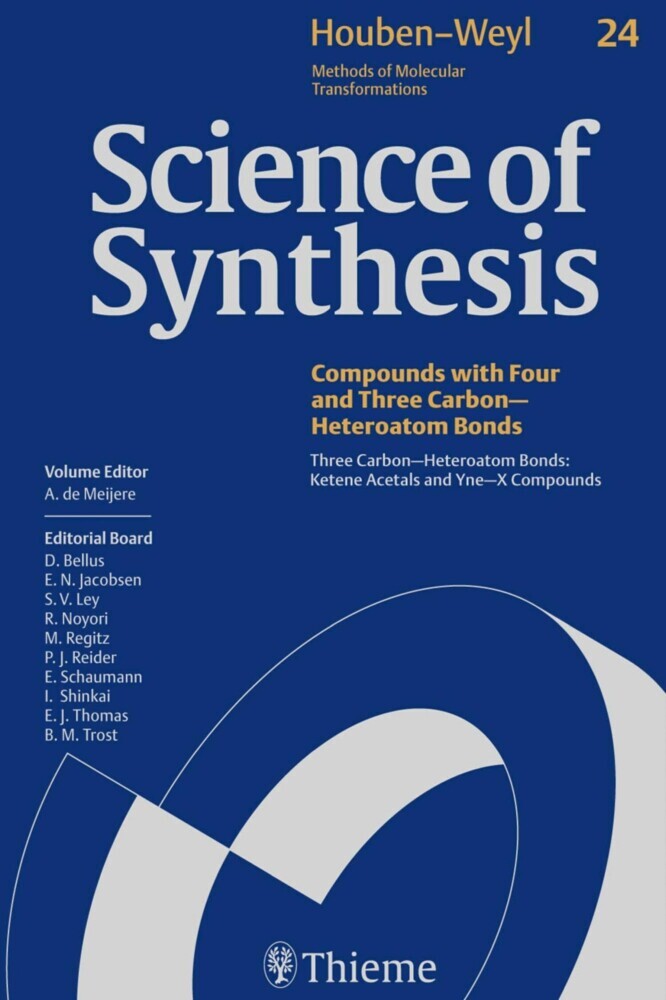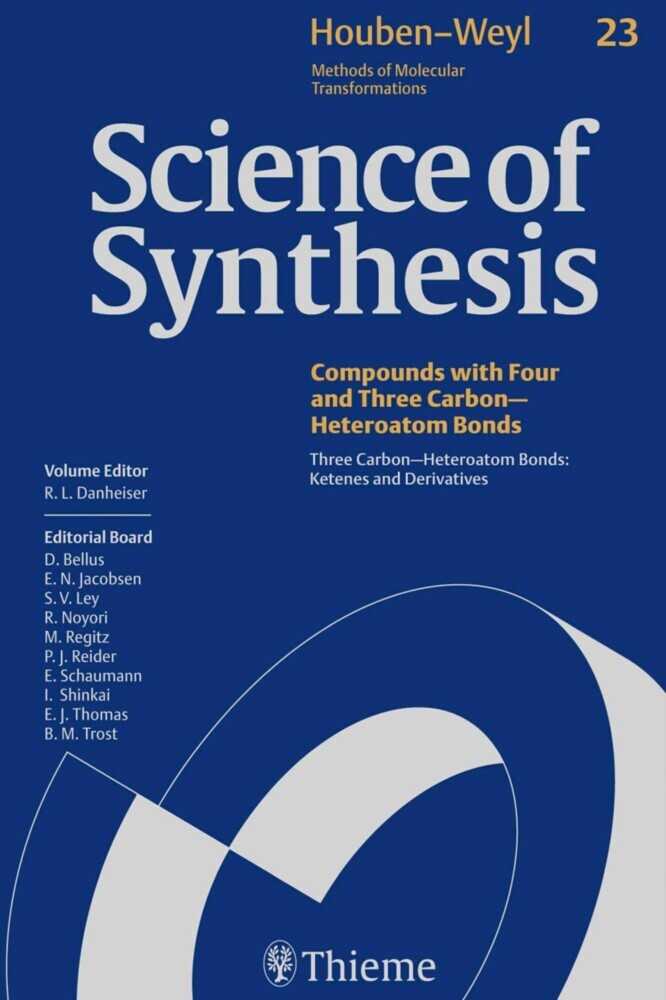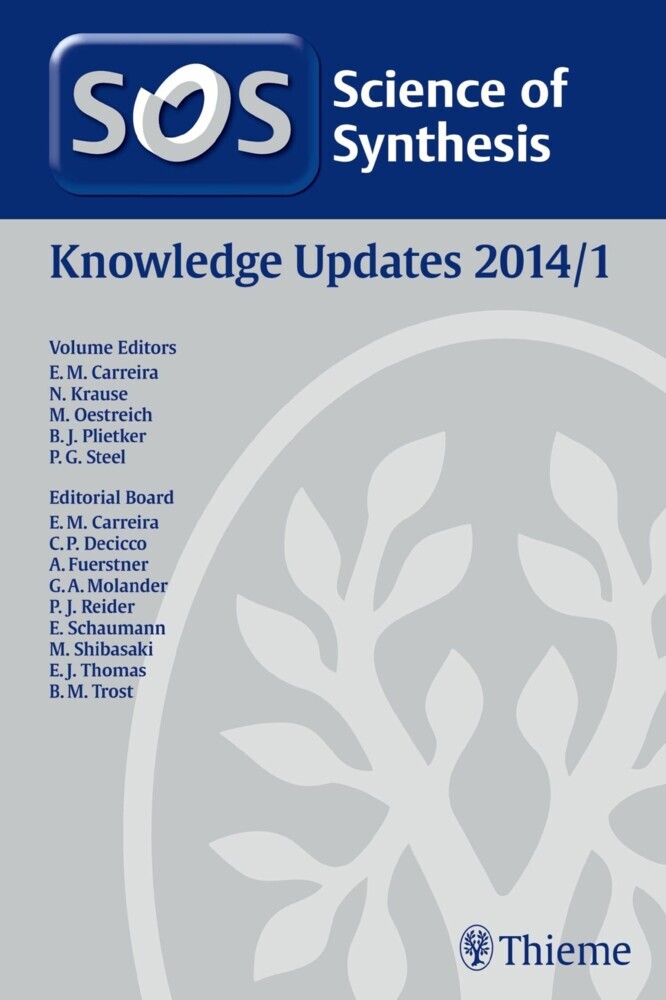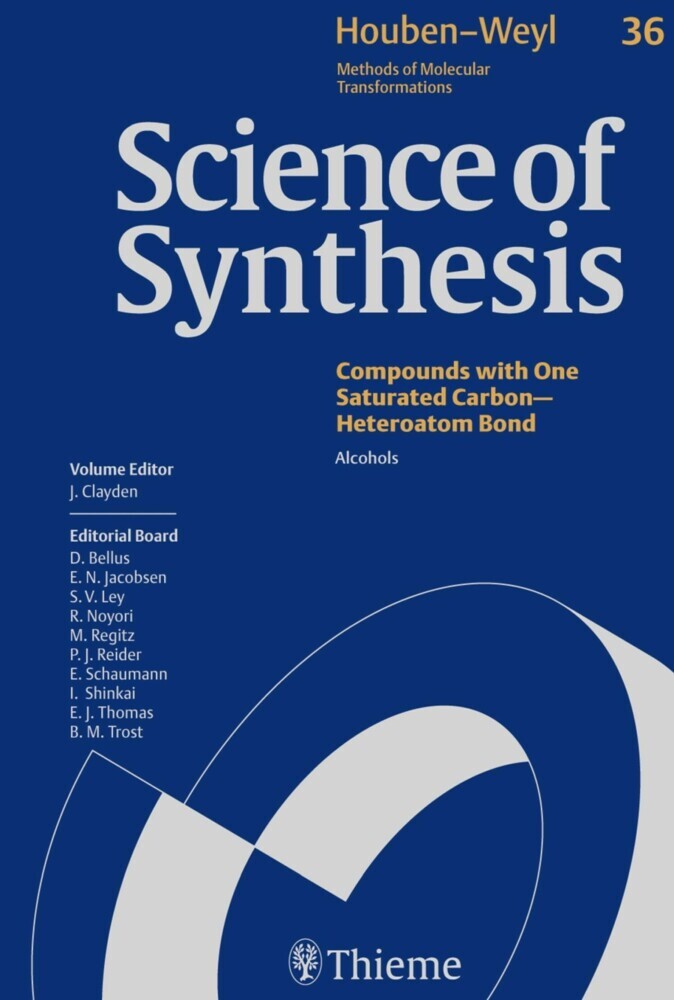Science of Synthesis Knowledge Updates 2012 Vol. 2
Science of Synthesis is a reference work for preparative methods in synthetic chemistry. Its product-based classification system enables chemists to easily find solutions to their synthetic problems.
Key Features:
- Critical selection of reliable synthetic methods, saving the researcher the time required to find procedures in the primary literature.
- Expertise provided by leading chemists.
- Detailed experimental procedures.
- The information is highly organized in a logical format to allow easy access to the relevant information.
1;Science of Synthesis: Knowledge Updates 2012/2;1 1.1;Title page;5 1.2;Imprint;7 1.3;Preface;8 1.4;Abstracts;10 1.5;Overview;18 1.6;Table of Contents;20 1.7;Volume 4: Compounds of Group 15 (As, Sb, Bi) and Silicon Compounds;42 1.7.1;4.4 Product Class 4: Silicon Compounds;42 1.7.1.1;4.4.25.11 Acylsilanes;42 1.7.1.1.1;4.4.25.11.1 Synthesis of Acylsilanes;42 1.7.1.1.1.1;4.4.25.11.1.1 Method 1: Synthesis of Simple Acylsilanes;42 1.7.1.1.1.1.1;4.4.25.11.1.1.1 Variation 1: Hydrolysis of Acetals;42 1.7.1.1.1.1.2;4.4.25.11.1.1.2 Variation 2: Oxidation of Organocuprates;44 1.7.1.1.1.1.3;4.4.25.11.1.1.3 Variation 3: Nucleophilic Substitution of Morpholine Amides;48 1.7.1.1.1.1.4;4.4.25.11.1.1.4 Variation 4: Additional Synthetic Methods;49 1.7.1.1.1.2;4.4.25.11.1.2 Method 2: Synthesis of Bis(acylsilanes);51 1.7.1.1.1.3;4.4.25.11.1.3 Method 3: Synthesis of a-Oxo Acylsilanes;54 1.7.1.1.1.4;4.4.25.11.1.4 Method 4: Synthesis of a,ß-Unsaturated Acylsilanes;56 1.7.1.1.1.5;4.4.25.11.1.5 Method 5: Synthesis of a-Amino Acylsilanes;57 1.7.1.1.2;4.4.25.11.2 Applications of Acylsilanes;59 1.7.1.1.2.1;4.4.25.11.2.1 Method 1: Applications of Simple Acylsilanes;59 1.7.1.1.2.1.1;4.4.25.11.2.1.1 Variation 1: Nucleophilic Addition;59 1.7.1.1.2.1.2;4.4.25.11.2.1.2 Variation 2: Nucleophilic Addition with Brook Rearrangement;68 1.7.1.1.2.1.3;4.4.25.11.2.1.3 Variation 3: Acylsilanes as Acyl Anion Precursors;81 1.7.1.1.2.1.4;4.4.25.11.2.1.4 Variation 4: Enolate and Enol Ether Reactions;94 1.7.1.1.2.1.5;4.4.25.11.2.1.5 Variation 5: Photochemistry;95 1.7.1.1.2.1.6;4.4.25.11.2.1.6 Variation 6: Miscellaneous Applications;99 1.7.1.1.2.2;4.4.25.11.2.2 Method 2: Applications of Bis(acylsilanes);103 1.7.1.1.2.3;4.4.25.11.2.3 Method 3: Applications of a-Oxo Acylsilanes;106 1.7.1.1.2.4;4.4.25.11.2.4 Method 4: Applications of a,ß-Unsaturated Acylsilanes;117 1.8;Volume 8: Compounds of Group 1 (Li ... Cs);126 1.8.1;8.1 Product Class 1: Lithium Compounds;126 1.8.1.1;8.1.34 Asymmetric Lithiation;126 1.8.1.1.1;8.1.34.1 Method 1: Deprotonation in a Position a to a Heteroatom;128 1.8.1.1.1.1;8.1.34.1.1 Variation 1: Enantioselective Deprotonation of Carbamates and Their Analogues;128 1.8.1.1.1.2;8.1.34.1.2 Variation 2: Enantioselective Deprotonation of Phosphorylated Derivatives;134 1.8.1.1.1.3;8.1.34.1.3 Variation 3: Enantioselective Deprotonation of Ureas;138 1.8.1.1.1.4;8.1.34.1.4 Variation 4: Enantioselective Deprotonation of Phosphoramidates;140 1.8.1.1.1.5;8.1.34.1.5 Variation 5: Enantioselective Deprotonation Followed by Transmetalation;141 1.8.1.1.1.6;8.1.34.1.6 Variation 6: Enantioselective Deprotonation Followed by Cyclization;147 1.8.1.1.1.7;8.1.34.1.7 Variation 7: Enantioselective Deprotonation Followed by Wittig Rearrangement;150 1.8.1.1.1.8;8.1.34.1.8 Variation 8: Diastereoselective Deprotonation of Carbamates;155 1.8.1.1.1.9;8.1.34.1.9 Variation 9: Diastereoselective and Enantioselective Deprotonations of Epoxides or Aziridines;159 1.8.1.1.1.10;8.1.34.1.10 Variation 10: Catalytic Enantioselective Deprotonation;161 1.8.1.1.2;8.1.34.2 Method 2: Deprotonation in a Position Lacking an a-Heteroatom;166 1.8.1.1.2.1;8.1.34.2.1 Variation 1: Diastereoselective Deprotonation in a Benzylic Position;166 1.8.1.1.2.2;8.1.34.2.2 Variation 2: Enantioselective Deprotonation in a Benzylic Position;167 1.8.1.1.2.3;8.1.34.2.3 Variation 3: Diastereoselective Deprotonation of Metallocene Derivatives;169 1.8.1.1.2.4;8.1.34.2.4 Variation 4: Enantioselective Deprotonation of Metallocene Derivatives;171 1.8.1.1.3;8.1.34.3 Method 3: Tin-Lithium Exchange;173 1.8.1.1.4;8.1.34.4 Method 4: Reductive Lithiation;176 1.8.1.1.5;8.1.34.5 Method 5: Carbometalation;177 1.8.1.1.5.1;8.1.34.5.1 Variation 1: Enantioselective Intermolecular Carbolithiation;177 1.8.1.1.5.2;8.1.34.5.2 Variation 2: Enantioselective and Diastereoselective Intramolecular Carbolithiation;180 1.9;Volume 13: Five-Membered Hetarenes with Three or More Heteroatoms;190 1.9.1;13.32 Produ
| ISBN | 9783131788214 |
|---|---|
| Artikelnummer | 9783131788214 |
| Medientyp | E-Book - PDF |
| Copyrightjahr | 2014 |
| Verlag | Georg Thieme Verlag KG |
| Umfang | 567 Seiten |
| Sprache | Englisch |
| Kopierschutz | Digitales Wasserzeichen |

